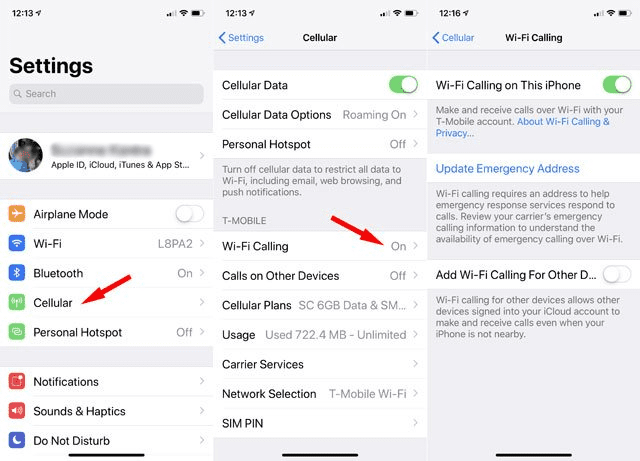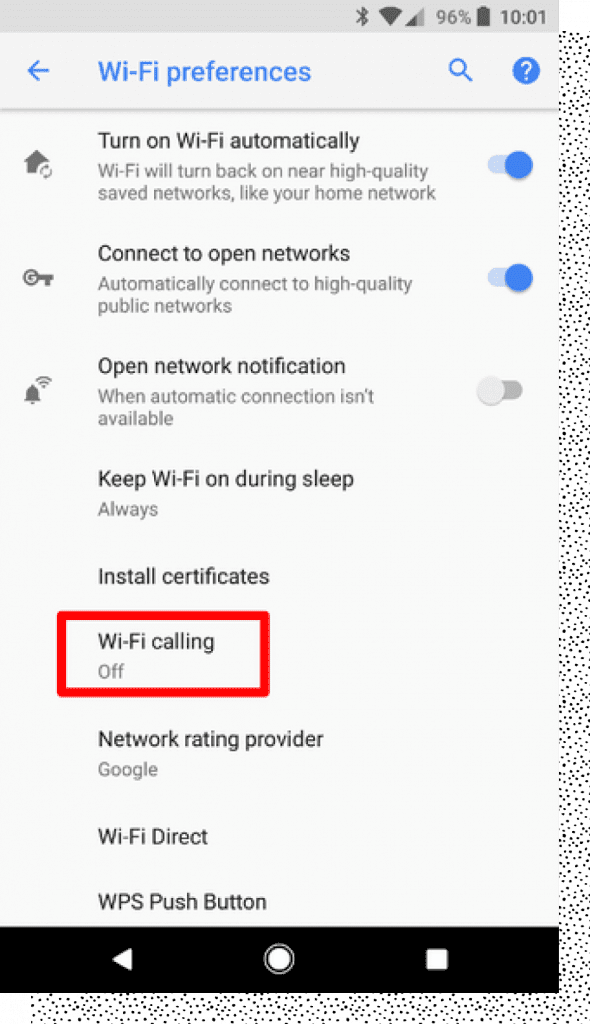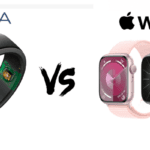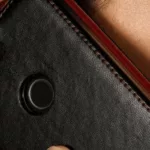One of the great ways of reducing your EMF exposure is to use WiFi calling more instead of making a cellular phone call.
We know that cell phones emit a huge volume of EMF while on call. It does this to maintain a steady connection with a cell tower located several miles away. But would your cell phone’s EMF emission still be this high if you had a personal miniaturized cell tower in your home?
No! As the distance decreases, electronic gadgets can communicate effectively on lesser EMF emissions. And you had a small personal cell tower inside your home, your phone’s EMF emissions would only be a fraction of what it generates at the moment.
Now, let’s be clear that installing a mini cell tower in a consumer’s home is not a service that network carriers offer. But you already have something in your home that can act as your personal cell tower — your WiFi router.
WiFi routers work similarly to cell towers. It gets a network from a certain source and distributes it to several devices. The only difference is that routers work for a specific user, and cell towers distribute to a massive group. If you turned on the correct settings, you could make high-quality voice calls right through your WiFi router.
Most modern smartphones come equipped with a feature called “WiFi calling.” With this feature, you can router your call through your WiFi network instead of using a far-away cell tower.

Want to Slash Your EMF Health Risks?
Good! Learn the one small change you should make right now.
What is WiFi Calling?
You may have already heard of terms like 4G VoLTE (Voice over Long-Term Evolution,) VoIP (Voice over Internet Protocol,) VoNR (Voice over 5G"5G" refers to the fifth generation of wireless communication technology, a step up from the previous 4G, 3G, and 2G networks. It's designed to provide faster internet speeds, more reliable... More New Radio,) and VoWiFi (Voice over Wireless Fidelity.) These terms refer to different ways of sending voice signals wirelessly using radiofrequency radiation"Radiation" in the context of Electromagnetic Fields (EMF) refers to the process by which energy is emitted and transmitted through space or a material medium in the form of electromagnetic... More.
4G VoLTE is what the majority of cell phone users currently have on their phones. It sends voice signals using the 4G network infrastructure. VoIP, on the other hand, uses the internet to transmit voice signals. Apps like WhatsApp, Skype, and Facebook use VoIP to enable voice and video calling services for their users.
VoNR is currently in its developmental phase, but it will most certainly take over VoLTE very soon.
And finally, you’ve got VoWiFi which lets you make voice calls through the WiFi connection in your home. When you enable this feature on your phone, it immediately shifts the network connection from your tower to your WiFi router. This is especially helpful if you don’t get good cell service in your home or a particular room.
Do You Get Charged for Making Calls Over WiFi?
The short answer is yes. If you’re making calls through the WiFi calling feature in your phone, then your carrier’s standard rates will still apply. WiFi calling just uses your router as a medium for transferring the voice signal to your operator’s network.
WiFi calling feature, on the other hand, doesn’t have any additional charges. If you have an active broadband connection and unlimited voice call plan on your number, then your WiFi calls will be completely free.
There’s a catch, though. If you’re in the US, the free unlimited calling is limited to US Virgin Islands or Puerto Rican numbers. International calls are subject to international calling plan rates.
Enabling WiFi Calling
The first requirement of WiFi calling is that you’ll have to be on a network that supports this feature. At the moment, almost all major carriers like at&t, Sprint, Verizon, T-Mobile, and even many smaller carriers like Republic Wireless support WiFi calling.
If your carrier is not listed above, you can simply contact them and ask if they support WiFi calling.
The second and also crucial requirement for WiFi calling is a device that supports it. Most smartphones operating on Android and Apple OS have the WiFi calling feature. If you’re unsure if your phone has this feature, you can do a simple google and say something like “Does [Phone Model] support WiFi calling?” and you’ll have your answer.
The final requirement is to update the E-911 (Enhanced 911) address. But this only applies to you if you reside in the United States. This is mandatory because E-911 makes it easier for emergency services to determine your location in an emergency.
When enabling WiFi Calling on your phone, you’ll be asked to register your physical address. If you ever call 911 through WiFi calling, the operators will send the required services to the same address you’ve added in the E-911 fieldIn the context of electromagnetic fields (EMF), the term "field" refers to a region in space where electric and magnetic forces are exerted. An electromagnetic field is generated by electrically... More.
911 calls usually prefer a cellular network. So, there are chances that your phone will shift the call’s route to cellular even if you have WiFi calling turned on. But, if you have absolutely no bars, it will use WiFi calling, and the operators will use your E-911 address.
Also, keep in mind that E911 is not automatic. So, you’ll also have to change your address if you move to a new location.
Steps for enabling WiFi Calling on iPhone
Go to Settings >> Cellular >> WiFi Calling >> Toggle ‘on.’
In some versions, you’ll find it in the ‘Mobile Data’ section instead of cellular.
As soon as you enable this and update your E911 address, you’re ready to make a phone call through your WiFi router.
Steps for enabling WiFi Calling on Android Phones
Go to Settings >> Network & Internet / Connections >> WiFi Calling >> Toggle ‘on.’
In some versions, you’ll have to go to Network & Internet >> WiFi Preferences >> WiFi Calling >> Toggle ‘on.’
QoS — Quality of Service
You have one router and many devices that connect to it, and on those devices, you use many services that occupy a huge chunk of your internet speed. So, naturally, your router does some prioritizations to serve you with an uninterrupted experience. This process is called the QoS or the Quality of Service.
For instance, let’s say you’re using Netflix to watch a video on your computer. It has occupied a significant portion of your internet speed. Now, say you have to make, or you get a WiFi call. This call will only get the remaining speed which is not a lot. So, there are chances you’ll have poor voice quality or face call drops.
Although, if you have high-speed internet, services like Netflix shouldn’t affect your call quality. But since your computer will not be the only device connected to your WiFi network, you may run into some congestion.
To avoid this from happening, you can tweak some settings on your router to prioritize WiFi calls over other services. You can easily get instructions for your specific router on the internet.
However, if you’re not the kind of person who likes to customize or tweak settings, there’s another option for you. You can get a router with “Smart QoS,” which automatically categorizes and prioritizes your devices based on their importance. The default prioritization settings for Smart QoS are:
- Voice
- Video
- Everything besides voice and video
- Background (Print Jobs, Downloads)
Is WiFi Calling Secure?
WiFi calling is generally secure, even if you’re in public networks like in cafes and restaurants. This is because your mobile carrier encrypts your voice signals, and it’s readable only through the carrier’s system.
However, if you use other voice-over-WiFi apps that bypass your mobile carrier, your voice data may not be encrypted. In this case, you can secure your data with a VPN.
Why Does WiFi Calling Emit Less Harmful EMF?
Making calls over WiFi uses less EMF than a regular cell phone call because WiFi signals only have to travel a much shorter distance to your router. In contrast, a call through your cell phone carrier has to travel a much longer distance to nearby cellular towers. This means that WiFi emits far less power than a cell phone signal, and this helps reduce the EMF emissions that you are exposed to.
To be clear, WiFi still emits EMF but with much less power than cell calls. So, minimizing your use of WiFi is ideal as well. But if you have to choose between the two, go with the WiFi call.
Disadvantages of WiFi Calling
To help balance out this post, I really tried to think of some compelling disadvantages of WiFi calling, but I couldn’t. As long as you have a decent WiFi network to use, it’s really the way to go.
Please note: I recommend using WiFi calling if WiFi is available. I do not recommend installing or activating WiFi just to support WiFi calling.
More Ways to Reduce Your Cell Phone Radiation Exposure
Making calls over WiFi is just one of the quick, simple, and free ways to reduce your health risk from cell phone radiation. If you want to do more, here are three simple things you can do to make a massive difference in your smartphone radiation exposure:
Don’t Sleep with Your Phone
A survey says that 66% of Americans sleep with their phones or keep them nearby at night. The younger you are, the more likely it’s for you to indulge in this risky behavior.
There are many reasons why people like to keep their phones near them when they go to bed. Here are some of them.
Alarm Clocks – You may need an alarm clock to wake you up in the morning. And phones certainly act as a free and highly efficient alarm clock.
Emergency Services – If you have your phone near you, it’s certainly easier to get help in case of an emergency.
Tech Addiction – Even though it may not seem like it, tech addiction is a real problem. Endlessly scrolling social media feed, binging media content until you fall asleep, and playing mobile games until you physically can’t keep your eyes open, are signs of tech addiction.
People who suffer from tech addiction also tend to keep their phones near their beds to feel connected. Physically, it doesn’t do anything; You’re not communicating with anyone when you’re asleep. But there’s a huge psychological factor that makes you do this.
Sleeping with your cell phone near your bed is certainly convenient, but it’s not at all healthy. It emits a massive amount of EMF, which causes your body to develop many health problems, with sleep disorders like insomnia being the most common one.
I don’t recommend even taking your phone to bed. Because, when you do, you don’t sleep well, which is itself a huge problem. Read my post on “Sleep Sanctuary” for more information on this.
Preferably, keep your phone in another room while at night. And if you need it to access emergency services faster, get a landline.
Don’t Carry Your Phone in Your Pocket
Carrying cell phones in pant pockets or bra is considered normal. But, do you know even phone companies say that you shouldn’t carry your phone that close to your body?
This is because the power"Power" in a scientific context refers to the rate at which work is done or energy is transferred. In simpler terms, it's how fast something is using energy. For example,... More of EMF is strongest at its source. And if you expose your body to EMF that dense, it can result in the development of many health problems ranging from minor fatigue and sleeplessness to chronic diseases like cancer.
Always keep a healthy distance with your phone when you’re carrying it. Instead of putting it in your pocket, place it in a bag or get a holster pouch.
Use Loudspeaker or a Radiation Free Headset
Cell phones emit a huge amount of EMF while on call. And when you put the phone on your ear, the massive EMF gets absorbed by your brain, which can later result in several neurological and neurophysiological problems.
I recommend using the loudspeaker function on your phone, or if that’s not an option, a wired or anti-radiation headset.
Final Thoughts
Technology is indeed a necessity in this modern world. But you don’t necessarily have to risk massive EMF exposure to access the benefits of technology. If you dedicate some time researching, you’ll find many low EMF gadgets that gives you the same experience, minus the heavy EMF exposure.









